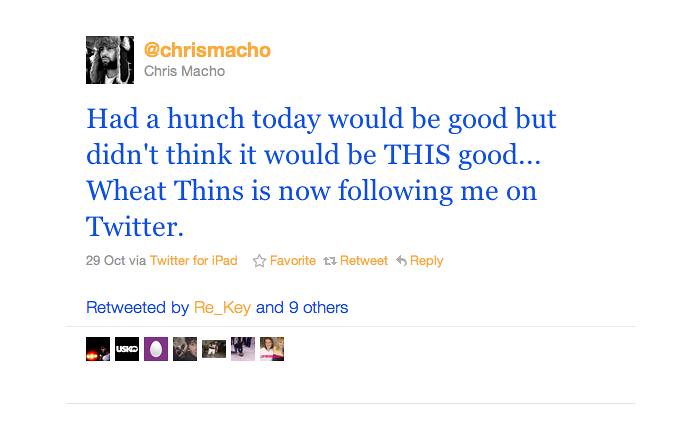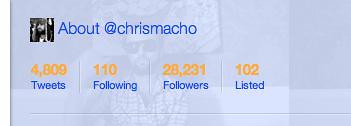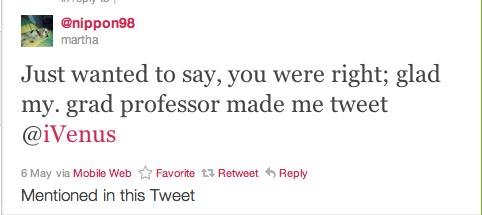
I want to revisit a concept I began toying with in a post a few months back. In it, I reflected casually on the role of marketing and participatory media in the culmination of Kanye West’s release of My Dark Twisted Fantasy. I spoke broadly about the role that the mechanisms that musicians like Mr. West utilize to successfully launch an album’s release also have strong implications not only for what educators can do in a classroom, but–what I argue–they will have to do in order to maintain an equitable approach to teaching America’s youth.
In conferences, courses I am teaching, and occasionally on this blog, the statistic I’m regularly calling attention to (other than the continually frightening statistics related to the achievement gap) is the dwindling rate of college completion in the United States. It’s a large focus of the U.S. Department of Education’s Blueprint for Reform, and it meshes well with the books that have held me captive on a smattering of longish flights lately. And while policymakers and district officials continue to search for solutions to equip more students with the proficiencies needed to matriculate to and, eventually, graduate from four-year universities, I would posit that the skills to learn so are being represented by a sole College Dropout.
I hope to provide a handful of case studies (like Kanye) of the ways the tentacles of a Beautiful Dark Twisted Pedagogy are creeping into mainstream culture, influencing how we interact, think, and make choices about how we engage with the world around us. These examples are not emerging on the fringes of popular culture. On the contrary, they are the essence of what is revealing itself as a participatory youth culture. Kanye’s album was a critical and commercial success. These are examples that are, for now, largely lacking in the kinds of instructional practices most teachers are utilizing in their classrooms. They are not themselves critical. On the contrary, they are capitalistic by nature and are seen in the marketing ploys of musicians, film companies, and general products.
Too often, we look at the realm of capitalism and disregard it wholesale; naw, that [person, product, event] ain’t down. And yet, while the content is a problematic perpetuation of marketing practices, the approaches themselves speak to the ways students are engaging, interacting, and approaching informal learning.
Approaching the challenging domain of capitalism with a lens of pragmatic optimism, I’m trying, here, to direct our attention toward the potential of participatory media as enacted by for-profit companies and think through ways these can be harnessed for wholesale social transformation.
All that being said, today, I want to talk about Wheat Thins.
Are you following Wheat Thins on Twitter? (Assuming you’re even on Twitter*)…
With commercials that appear extremely low-fi, Wheat Thins crafted a marketing campaign that not only went viral, but encouraged participation and amplification of their brand. They did this by highlighting real individuals and real tweets:
And yes, Chris Macho is real (there’s a commercial where the Wheat Thins reps prove they are uber real). And yes, as a result of his awesomeness, he’s gotten a TON of people to follow him on Twitter:

Not only did thousands of people follow Wheat Thins, but the company got people to willingly engage in dialogue, share what they liked about the company and, essentially, advertise why Wheat Thins are an awesome snack, accessory, and guitar pick.
Wheat Thins essentially nudged a huge market to become mavens, salesmen, and connectors (to lift Gladwell’s labels**through Twitter; the incentive may be a sweepstakes-like gimmick (send a note about wheat thins, and you might end up on a commercial), but I can also reasonably imagine that the participants had fun feeling engaged in the marketing strategy. And considering that this campaign has been going on for months, it’s telling that people are still tweeting in hopes of their tweet being “heard” today:

Again, this isn’t a post pointing to a secret phenomenon – the ads are seen by millions, tweeted by thousands, and you’ve likely seen them before. They aren’t doing anything new either: companies respond to tweets, follow/like other information on social networks all the time, and produce DIY-style video for their products on a regular basis. In essence, companies mimic what young people regularly do on their own; they do what kids do when they are having fun hanging out, messing around, and geeking out.
As educators, how can we inform our pedagogy by Wheat Thins? Perhaps not the most astutely worded of education-related questions, but a necessary one nonetheless. The company has made participating in their ad campaign fun, silly, and sticky. Why can’t our classrooms leverage similar tools to get young people excited, in conversation, and networking globally around classroom content? I am not speaking about co-opting youth practices within a classroom. On the contrary, I am speaking about a large-scale effort to update the classroom into the kinds of networked ecologies that are utilized for interaction everywhere except for in schools.
A Beautiful Dark Twisted Pedagogy is one that envelops students in opportunities to engage with extrinsic and intrinsic rewards. It allows youth to speak back to the content and see work in dialogue. It begins with youth interest and quickly amplifies key concepts that resonate within a classroom and well beyond. And while I can’t pinpoint a specific series of steps that can be taken to “update” one classroom after another, listening to young people, delving into previews for blockbusters, forcing yourself to spend sometime noticing commercial during primetime television (even if you hate American Idol and have sworn off MTV), are going to be the best signals for how young people’s attention is being drawn both outside of schools and–if you’re at all having the kinds of phone-use woes I’m hearing from many of my colleagues–in your classrooms.
A gimmick like Wheat Thins’ isn’t going to save our schools. It is, however, going to point towards ways we can work hand-in-hand with our students and communities to save our schools.
—
*Twitter footnote: I was so proud of this tweet that I had to share it:

** Sorry, after teaching The Tipping Point a half dozen times to seniors, this is what happens.
Wheat Thins like twitter are addicting…..becoming informed or tapping into any form of pedagogy is possible via twitter….and again, I am happy that you made us tweet…thank you, Professor Garcia.
Pingback: The American Crawl : Rethinking “A Call For Change”: Examining Sara’s Criticism of Tyler, the Creator
Pingback: The American Crawl : Your Summer Syllabus: Three Recent Examples of Participatory Media that Teachers Should Know About (Beautiful Dark Twisted Pedagogy Ahead)